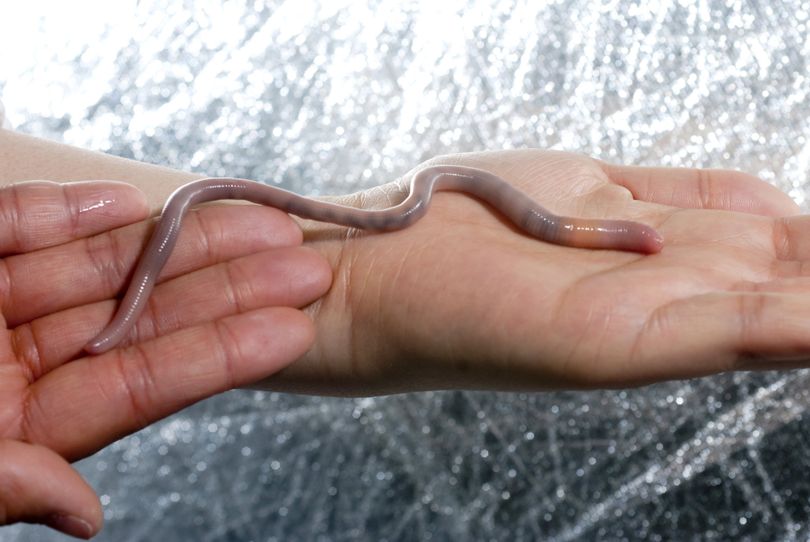Feds don’t dig giant Palouse earthworm endangered petition

ENDANGERED SPECIES -- A large white earthworm (Driloleius americanus) native to portions of Idaho and Washington will not be granted protection under the Federal Endangered Species Act, the U.S. Fish and Wildlife Service announced today.
Federal biologists say recent information indicates the elusive worm, known as the giant Palouse earthworm, may be more widespread than previously thought and they need more information before providing protections that might come with an ESA listing.
Of course it's elusive. It lives underground in the dirt. Sheesh. If it were common, anglers would be hooking steelhead with those buggers every fall.
Read on for more details from the USFWS.
"We have a lot of questions yet to answer about this species," said Robyn Thorson, Director of the Service’s Pacific Region. "According to recent information, they may be more widespread and exist in more habitat types than we previously thought. We also don’t know if they are a deep-burrowing species that forages on the surface or a more shallow-burrowing species that forages in top soil layers –questions that are relevant to assessing potential threats to the species. If we don’t know where these animals live and we can’t determine the level and type of threats, we cannot determine whether the protection of the Act is required."
"We do not know yet whether the giant Palouse earthworm is simply a difficult to find species, a naturally rare species, or a species that is rare and at risk from various threats," Thorson added.
The giant Palouse earthworm, a species first described in 1897, was once thought to be abundant only in grasslands of the Palouse area, although it has been located near Ellensburg, Washington. While a handful of specimens have continued to be found in the Palouse area in the last decade, there are now recent confirmed locations along the east slope of Washington’s North Cascades, including one in a forested site near Leavenworth, Washington. Researchers analyzing results of recent surveys have also found unconfirmed specimens (determined to be Driloleirus genus but unknown to species) in shrub/grassland near Chelan, Washington, and in a forested location east of Moscow, Idaho.
Today’s announcement responds to a 2009 petition by the Friends of the Clearwater, Center for Biological Diversity, Palouse Audubon, Palouse Prairie Foundation, and the Palouse Group of the Sierra Club. Following a 90-day review of information provided by the petitioners, the Service determined that substantial information was presented to indicate the species might warrant listing as a threatened or endangered species and on July 20, 2010, the Service announced initiation of a status review.
Early descriptions and collection sites indicated the species was endemic to the Palouse bioregion and utilized grassland sites with good soil and native vegetation. Since then much of the Palouse grasslands have been cleared of native vegetation and converted to agricultural, residential or commercial use. Now it appears the species’ range is broader than the Palouse area (including the east slope of the Cascades further north than previously known) and is found in a wider range of habitats than previously known (including dry forests).
Biologists point out there has been limited survey effort to find the worms, especially outside the Palouse grasslands, and more surveys are needed to accurately determine the species’ range and distribution. The species is difficult to detect, and researchers continue to explore appropriate survey methods. It is also difficult to determine the species of Driloleirus earthworms; they require dissection or DNA analysis, both of which take time.
They also cite many unanswered questions relevant to the giant Palouse earthworm’s life history, habitats, and distribution, such as: Are the uncomfirmed Driloleirus near Chelan, Washington (east slope of the Cascades), or east of Moscow, Idaho, also giant Palouse earthworms? Where the species occurs in the forest, are they limited to certain forest types, ages, or elevations? Is the species’ range limited to certain precipitation levels? How far does its range extend? Where does the species still occur near Ellensburg, Washington? What are the best techniques for surveying for the species?
Biologists say these, and possibly other questions, must be answered before they can determine whether the worms are at risk or just hard to find.
The mission of the U.S. Fish and Wildlife Service is working with others to conserve, protect and enhance fish, wildlife, plants and their habitats for the continuing benefit of the American people. We are both a leader and trusted partner in fish and wildlife conservation, known for our scientific excellence, stewardship of lands and natural resources, dedicated professionals and commitment to public service. For more information on our work and the people who make it happen, visit www.fws.gov.
